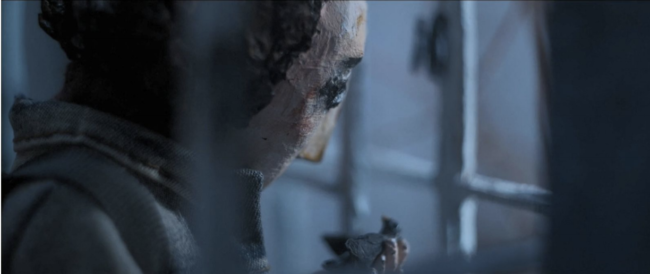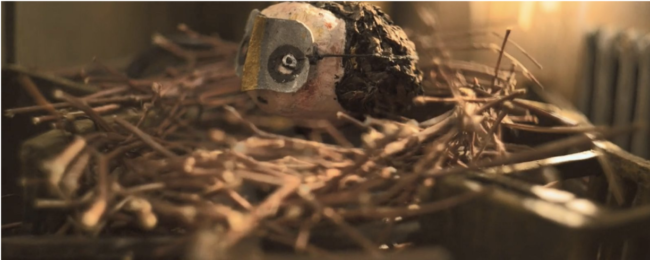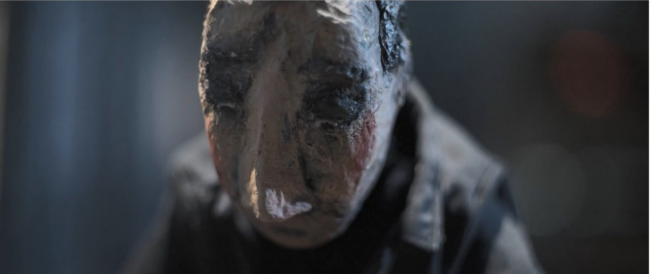“Daughter”: One Year Later
By Grey Knauer

Daughter, or Dcera in Czech, is a stop-motion short film by Daria Kashcheeva about a father and daughter navigating difficult emotions related to pain, loss, and regret. Using no spoken dialogue, a very minimal musical score, and an immersive use of environmental sound effects, Daughter communicates some of the most universal dynamics a parent and child face throughout life. Kashcheeva was driven to create this film after reflecting on her childhood, specifically wanting to focus on the difficult aspects of a father-daughter relationship, and the emotional distance one experiences with a parental figure in general.
She has said that she had a fairly good childhood, but regardless, small moments of disconnection can linger and echo into interactions years later. Daughter captures a story that almost anyone can relate to, and its global renown reflects this. Although this film has deservedly received international acclaim, I believe its framework around a sick relative in a hospital is now more relevant than ever, as the whole world has undergone immense loss in the past year due to the Covid-19 pandemic.
Daughter begins in a hospital room, the only initial clue of this is the abrasive sound of a heart monitor beeping. The camera fades in, slowly focusing on a person facing away from us- emotional disconnection is established immediately. We pan to the side of a woman’s face, and then focus shifts to a man laying in a hospital bed. The two struggle to maintain eye contact and share awkward glances. Suddenly, the sound of glass breaking disrupts the near-silence. The woman runs to the window and picks up the source of the crash– a bird. It lays lifeless in her hands, and after a moment of silence, the hospital monitor beeping fades out, and the sounds of stomping feet overwhelm the audio. We are transported to the girl’s childhood where she had a similar experience with a dead bird: She found a dead baby bird and rushed to show her father who was too busy tending to a chaotic kitchen to truly comfort the young girl. The disconnect experienced between the two is one of a few in their lives where the daughter and her father tried and unintentionally failed to share a significant emotional moment. The chaos of the outside world often creeps in, and the culminating moment of their relationship ends up resolving as her elderly father lay sick in a hospital bed. The film jumps between three timelines, from the girl’s childhood, to adolescence, to adulthood, each reflecting echoes of the initial event of when she found the baby bird as a child. The emotional journey Kashcheeva takes viewers on provides a comforting catharsis for all of the uneasy feelings explored in the film.
This movie is stop-motion, using puppets and sets made from wood, wire, and papier-mache; delicately painted and clothed with denim and felt. The first shot opens on a denim and canvas backpack, tricking the viewer into thinking this may be a live-action movie for only a few moments. The introduction to the titular character is facing away from the viewer, immediately setting the scene for a person who is emotionally distant. Very little eye contact is made throughout the film, but lots of attention is paid to the shifting, nervous facial expressions the characters make.The way that the characters’ faces are painted reflects their gloom, and the father’s face is clearly very worn and damaged.

The palette of the film is very neutral, normally staying in cool grey and brown tones; this is only departed from in the memories of the girl’s childhood as well as other scenes not happening in the present. The use of sound in this film was very carefully put together, as the lack of any spoken dialogue necessitates a very delicate use of sound. Most of the transitions between scenes are accompanied by sweeping atmospheric scene changes; even the ringing of silence is amplified at times, consistently immersing the audience into whatever scene we get enveloped in.
The creator of this film had a clear theme that she was trying to convey, and this theme is explored in a beautiful way. Not everyone can relate to the specifics of a distant relationship between a daughter and father, but the experience of emotional disconnection and taking small miscommunications personally is something most people experience with a parental figure. The themes of approaching sickness and loss with grudges and rehashed feelings of guilt is also especially relevant in 2020, when many of us have been directly faced with the loss of our older relatives and the overwhelming emotions attached to the thought of not being able to make things right. Director Daria Kashcheeva and co-creators Marie Urbánková and Martin Pertlíček joined forces and used their skills of film, animation, and puppetry to create this emotional film, which was Kashcheeva’s graduate film for FAMU- the Film and TV School of Academy of Performing Arts- in Prague. Originally from Dunshabe, Tajikistan, Daria Kashcheeva has made two other short films prior to this one. Kashcheeva reached great heights with this film, achieving international recognition in dozens of festivals and awards, as well as being the first student film to be nominated for an Academy Award in the Best Animated Film category.

Overall, Daughter is a beautiful piece of media, and its emotional journey communicates a universal type of interaction. The film’s excellent, immersive use of sound transforms the audience into its world. The themes of sickness and loss are now especially more relevant than ever, so Daughter is a film that deserves it’s global renown even more so a year after its release. This film can be rented on Maur Film’s Vimeo page.

